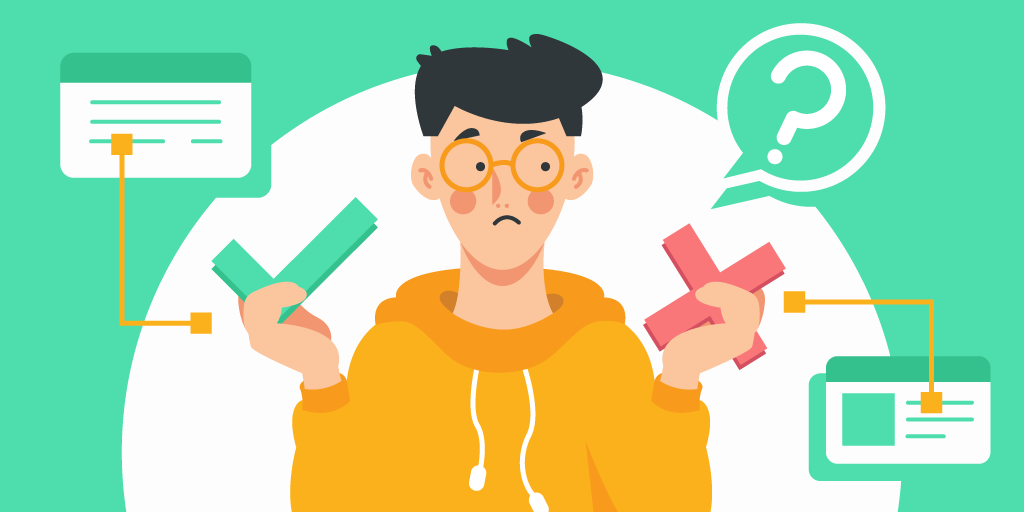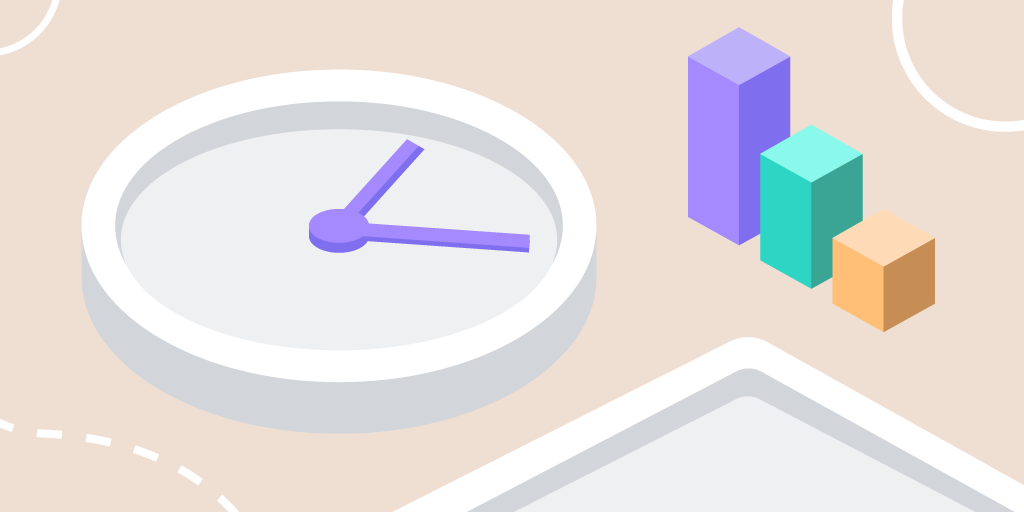Queue management is a topic that’s surrounded by a lot of hearsay and misleading information — “fake news”, if you will.
(Or maybe we should call this misinformation QueueAnon?)
Anyway, we’ve decided to compile a huge list of all the facts and stats on queue management, queuing and their effect on customer experience.
This list is going to be regularly updated with relevant information and new statistics, so make sure to bookmark it for future reference 😉
How long we wait: average wait times stats
Americans spend 37 billion hours waiting in line each year. (Source)
The average Brit spends one year, two weeks and a day of their lives stuck in shop queues. (Source)
Customers differ in what they consider a long waiting period: (Source)
25% would only wait a maximum of two minutes.
59% would wait no longer than four minutes.
73% would abandon their purchase if they had to queue for more than five minutes.
Customers agree that queue management is something that businesses should pay more attention to: (Source)
83% of shoppers consider fast moving queues an essential part of the customer experience.
76% say stores should be doing more to reduce queues in busy periods.
56% of consumers say fast payment and reduced queuing is critical to “positively influencing their perception of a retail brand”.
The average shopping trip includes 20.2 minutes of queuing in total. (Source)
Psychological and emotional effects of waiting on customers
Over 75% of shoppers say that queuing to pay for a product is the worst part of the in-store experience. (Source)
Queues can be a source of anger, frustration and arguments: (Source)
27% of consumers get annoyed by fellow shoppers when queuing.
19% of shoppers have even had an argument with a partner or friend in a queue.
Nearly 50% of customers will wait in a queue despite feeling irritated. (Source)
Perceived duration of waiting has a bigger impact on consumer satisfaction than the actual wait time. (Source)
Once a wait lasts longer than three minutes, the perceived wait time multiplies with each passing minute. After five minutes, the perceived wait time is doubled. (Source)
People overestimate their wait time by around 36% (Source)
84% of grocery store shoppers reported that watching digital signs made checking out far less daunting (Source)
Perceived wait time is reduced as much as 35% by digital signs. (Source)
Queuers often feel that the other queue moves faster than theirs. We call such non-existent relationships between two variables illusory correlation. (Source)
How queue management impacts revenue and sales
86% of Brits say they avoid stores if they perceive the queue to be too long: (Source)
74% would shop in a competitor’s store if they perceive the queue time to be quicker.
70% would be less likely to return to shop again if they had experienced long waits, researchers found.
Long queues are among the chief contributors to lost store revenue, with £11.3 billion incurred. (Source)
Long waiting could be costing UK retailers as much as £3,581 per day in lost revenue. (Source)
Long queues are costing retailers up to £12 billion each year in potential sales losses: (Source)
£6.4 billion lost by retailers to their competitors.
£5.6 billion lost due to customers leaving or deciding to spend less.
66% of British consumers have abandoned their purchase because of long queues, with only 22% returning later to make the purchase. (Source)
Increasing the queue length from 10 to 15 customers would reduce purchase incidence from 30% to 27%. (Source)
In Singapore, retailers incur over $1.6 billion a year due to mismanaged queues. (Source)
89% of Singaporean shoppers have left a store in the past six months because the queue was too long: (Source)
34% did not attempt to purchase the item again.
27% purchased a similar item from a different retailer.
Retailers in Hong Kong lose up to $2.35 billion because of shoppers discouraged by long queues. (Source)
Shoppers have been polled to find ways in which retailers might improve the customer experience: (Source)
24% say retailers should offer extra loyalty points for those enduring long queues.
21% propose rewarding customers with additional promotions, such as a free cup of coffee.
10% are in favor of a fast track queue for VIP customers during busy periods.
Retailers lose 10% of footfall due to queues and wait times in store. (Source)
For each person in line ahead of a customer, there is a 7-cent increase in the order size. (Source)
26% of customers who walk out of customers will discontinue their purchase journey completely. (Source)
Only 77% of shoppers are satisfied with the length of lines. (Source)
Waiting and healthcare: average numbers, consequences and complaints
The average time of waiting for the doctor is 18 minutes, 35 seconds. (Source)
Physicians with a five-stars rating have wait times that are over 20 minutes shorter than wait times of doctors with a one-star rating: 12 minutes, 33 seconds versus 33 minutes, 4 seconds. (Source)
84% of patients say that reasonable wait time is somewhat or very important to a quality patient experience. (Source)
30% of patients experiencing long wait times leave before seeing the doctor, and 20% change their healthcare providers altogether. (Source)
Patients aged 70 to 74 are almost 10 percent more likely to have a stroke when visiting facilities with longer wait times. (Source)
43% of patients start feeling frustrated when wait times at their doctor’s office hits the 20-minute mark. (Source)
More than half of physicians surveyed say patients often experience wait times longer than 20 minutes. (Source)
61% of physicians have heard negative feedback from their patients regarding wait times. (Source)
A combined 63% of physicians believe wait times have “no impact” or “minimal impact” on their ability to retain patients; however, 24% of patients say they’ve changed doctors because of long wait times: (Source)
12% of physicians: “no impact at all”.
51% of physicians: “a minimal impact”.
64% of physicians say patient arrival times (e.g., patients arriving later than their scheduled appointment time) are usually the biggest reason they run behind schedule. (Source)
83% of patients say being told in advance what the wait time will be could help to reduce frustration. (Source)
No-show patients cost around $200 per unused time slot, and the average no-show rate for most US practices is around 20%. (Source)
Patients' reactions to long wait time: (Source)
24% change providers.
24% tell friends and family not to make appointments with that provider.
22% leave the office without seeing the doctor.
17% rate the provider poorly in a patient satisfaction survey.
14% leave a critical review of the medical provider.
41% of patients specifically look for information about wait times when evaluating new doctors through online reviews. (Source)
Main causes of long wait times in healthcare: (Source)
64% due to patients arriving late.
61% due to unexpected patient-related issues.
25% due to technical difficulties.
20% due to staffing issues.
8% due to other issues.
20% of doctors say they experience staffing challenges that influence wait times. (Source)
Strategies for minimizing wait times suggested by patients: (Source)
83% think it would help to be told in advance of the length of wait, or get notified via phone or text ahead of the appointment if wait time is over 30 minutes.
64% want to receive an apology from the provider for the duration of wait.
56% want a TV in the waiting room.
67% want free WiFi in the lobby.
69% want complimentary snacks and beverages.
49% want free reading materials in the waiting room.
72% of patients would be willing to see a different physician to minimize their wait. (Source)
90% of the visits to Canadian emergency departments, the actual time spent from triage to the doctor’s initial assessment was much longer than the recommended response time. The actual waiting times were 47 to 229 minutes, as compared with the recommended standard of up to 120 minutes. (Source)
In China, a study among outpatients in a tertiary hospital showed that the average wait time for registration was 98 minutes and that some patients waited as many as 13.5 hours to ensure a registration with a certain doctor. (Source)
In US, 61% of the patients waited 90 to 180 minutes in the outpatient department, while 36.1% spent less than 5 minutes with the doctor in the consulting room. (Source)
How long we wait in banks
The average bank queue is more than 20 minutes, up to 40 minutes. (Source)
The average time spent waiting in a bank lobby rose from four minutes and 46 seconds to five minutes and eight seconds, an increase of 8%. (Source)
In 2014, more than a fifth of Americans said they hadn’t been in a bank branch in more than a year, and 70% said they hadn’t been in a branch in the past week. (Source)
Waiting in restaurants
In the US, the average wait before being seated at a restaurant is 23 minutes: (Source)
93% of restaurants have at least some wait time periods.
30% of restaurants report that waits are getting longer.
The average wait per party is 23 minutes. Nearly a third of customers are waiting more than 30 minutes. 8% wait longer than 40 minutes. (Source)
Without waiting, the total revenue generated by the restaurant would increase by nearly 15%. (Source)
Restaurants have wait lists an average of 6.6 hours per week, with parties waiting nearly half an hour on average for a table. (Source)






